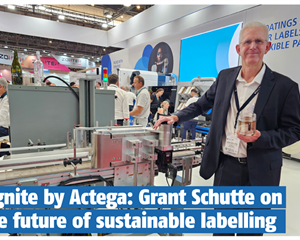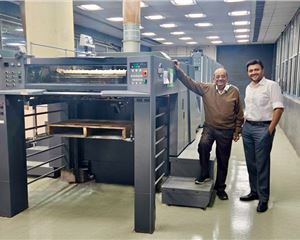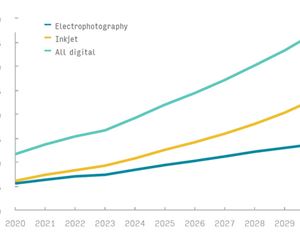Comic Con India's next act: Scaling pop culture without losing fandom roots
As brands chase fandom gold, the event is crafting a careful expansion playbook — scaling big while protecting the authenticity Gen Z demands
02 May 2025 | By PrintWeek Team
Since its Indian debut in 2011 — a decade after its US counterpart — Comic Con India (CCI) has morphed from a niche gathering of comic book loyalists into a sprawling youth culture carnival. Nineteen-year-old Shlok Bhatia's Comic Con India experience neatly captures the paradox facing India's premier pop-culture event. A decade ago, Shlok marvelled at cosplayers channelling Marvel and DC superheroes; in 2025, at Mumbai Comic Con, he found the focus had shifted towards gaming and tech activations, with comics taking a visible backseat.
His disappointment underscores the tightrope that CCI has had to walk: evolving with India’s fast-changing pop-culture palate without alienating its core fandom. From the outset, CCI faced a formidable challenge: how to transplant a globally niche subculture into a scalable property for India's diverse audiences.
“The biggest challenge back then was – everything!” CCI’s founder, Jatin Varma, candidly tells Campaign. “I had no experience in organising events at a large scale, especially something as unique as Comic Con. It was a steep learning curve.” Crucially, Varma and his team realised early that a cut-copy-paste version of the American template wouldn’t work. "We had to ensure our version of Comic Con was a healthy mix of Indian and international content," he adds.
Translating niche fandom into mainstream culture
Brands have followed CCI’s growth fast. India already leads the event’s APAC markets regarding brand associations and has even overtaken the US. Sponsorships and brand associations contribute 30% of CCI’s revenue, with exhibition fees leading at 40%, and ticketing making up the rest. Tellingly, the event started charging entry only in 2013 — two years after the launch.
Over the past 14 years, CCI has expanded its scope beyond comic books to embrace the full spectrum of pop culture: gaming, cosplay, esports, influencers, OTT content, and social media fandoms. This expansion wasn’t just strategic—it was essential. "We kept expanding our tent to ensure all these elements of popular culture became a part of our events," Varma says.
Cracking Gen Z’s shifting attention economy
Today's Comic Con audience is not just older millennials reliving their childhoods—it’s Gen Z. Their entertainment diets are shaped by reels, memes, and short-lived fandoms that can peak and fade within months. “The content and programming at the events are constantly evolving, some things last and some fade out,” says Varma. Audience feedback loops are central to their planning process. “We are also constantly taking audience feedback, which helps us curate our events better.”
The result is a thoughtful blend of old and new: classic comic fandom experiences coexist with gaming tournaments, influencer meet-and-greets, and esports demos—ensuring Comic Con remains relevant without losing its soul.
Yamaha Motor India: from brand visibility to cultural relevance
Yamaha Motor India claims that its association with Comic Con isn’t just about brand visibility; it’s a deliberate strategy to connect with Gen Z. This year, Yamaha leaned fully into immersive brand activations to forge authentic cultural connections. “As a brand designed for youth, especially Gen Z, Yamaha’s identity is infused with energy and innovation that aligns perfectly with a premium lifestyle,” says Vijay Kaul, head of marketing and communication at Yamaha.
At Comic Con, Yamaha offered activations like real-time photo-sharing with the RayZR, a Samurai-inspired zone for the MT-03, racing-themed photo-ops for the R15, and MotoGP gaming booths. Across five cities—Hyderabad, Delhi, Bangalore, Chennai, and Mumbai—their pavilion drew a cumulative footfall of 70,000. Brand engagement surveys conducted during the events are now feeding directly into Yamaha’s product strategies.
For brands, it’s about earning attention — not buying it
Traditional sponsorship — logo placement, hashtags, celebrity appearances — doesn't work at Comic Con. “Brands engage through integration, not just visibility,” Varma says. “This is an extremely enticing mix that is rarely offered by live events in India.”
From Vodafone using ZooZoo mascots to Royal Challenge Packaged Drinking Water becoming the hydration partner, brands now prioritise immersive experiences over passive exposure. And it’s not just entertainment and tech brands jumping in—automobiles, banks, FMCG, and cab services are leveraging Comic Con’s passionate youth audience and long dwell time (5–6 hours on average).
Building real connections, not just media impressions
Newly appointed CEO Shefali Johnson underscores the importance of fan-first experiences. “Every activation is crafted to feel authentic and meaningful,” she says. “Rather than relying solely on traditional visibility like logos or hashtags, we curate experiential booths tailored to audience interests.”
This fan-first model is what keeps long-term brand partners returning. “Brands engage through interactive activations, such as live demos, exclusive content drops, and real-time fan interactions,” Johnson adds. “It’s a win-win: fans get more of what they love, and brands become part of something meaningful.”
CCI’s growth strategy under new leadership
Taking over in 2025, Johnson has laid out a pragmatic growth strategy. Expanding Comic Con to new cities is a priority. “Over the next 12–18 months, our goal is to expand Comic Con India to more cities, making it more accessible to fans across the country,” she explains.
The roadmap includes deepening brand partnerships, growing IP through merchandise and digital content, and crafting year-round experiences. While Mumbai and Delhi are the biggest revenue drivers, CCI is exploring tier-two cities like Jaipur and Indore.
“Comic Con India is a celebration of community,” says Johnson. “As we grow, we’re customising each event to reflect the local fan culture while staying true to our essence.”
Sustaining authenticity at scale
Comic Con India’s biggest challenge ahead is maintaining its authenticity while scaling. With India’s youth culture rapidly fragmenting across niche fandoms and fast-evolving digital trends, CCI must continuously adapt.
The numbers are promising: high dwell times, diverse brand interest, and strong emotional engagement. But the real win lies in staying true to fandom while delivering value to both fans and brands. In a media environment where brands can buy attention but rarely earn it, Comic Con India’s model — earn their fandom or go home — might just be the future of youth marketing in India.
(Source: Campaign India)












 See All
See All